Text and photos by Mary L Peachin
Vol. 23, No.8 July/August 2020
The World War II Japanese invasion of Alaska’s Aleutian Islands is a little known fact. In June, 1942, Imperial Army invasions of Attu and Kiska islands was the first time that the United States was attacked, since the War of 1812, and occupied by any country. It was the second of two Japanese invasions of the United States during World War II (the other being Pearl Harbor.) Almost a year later, during the Battle of Attu, an Allied victory ended Japanese occupation.
The Aleutian Campaign, comprised of 1,140 Japanese infantry, was commanded by Major Matsutoshi Hosumi. After taking control of Attu, they captured forty five Aleuts plus two Americans. A small village consisted of several houses around Chichagof Harbor. The captured Aleuts were imprisoned at a camp near Otaru, Hokkaido where sixteen of them would perish.
During the Japanese occupation of Attu, Japanese soldiers constructed an air strip with fortifications. The nearest American forces were on Unalaska Island in Dutch Harbor and an airbase on Adak Island. Throughout Japanese occupation, American air and naval forces bombarded the occupied islands.
Japan’s original plan was to hold the Aleutians until winter of 1942. When the occupation continued into 1943 in order to deny Americans use of the islands, the garrison of Attu was moved to Kiska to defeat a suspected American attack.
From August to October 1942, Attu remained unoccupied until a 2,900-man force led by Colonel Yasuyo Yamasaki’s arrived. The new garrison of Attu continued constructing the airfield and fortifications until May 11, 1943, when a 15,000 man Army of American troops landed. A Japanese submarine was forced to surface five miles northeast of Chichagof Harbor, where she was sunk in a surface engagement with the USS Edwards during the Allied liberation of Attu.
When American General John L. DeWitt took control of the island the remaining Japanese troops conducted a massive banzai charge, a technique of human wave and swarming infantry attacks. During the battle 549 were killed, 1,148 wounded, and the remaining 2,100 were evacuated. American troops were not prepared to live underdressed and unprepared for Aleutians’ high wind and freezing inclement weather conditions.
During the Battle of Attu, twenty nine Japanese were killed. The occupation ended with an American victory. Attu village was abandoned after the war, and surviving members of Japanese internment were moved to other islands after the War. In 2012, for the 70th anniversary of the occupation, a memorial to Attu village was dedicated at the former site of the town.
The United States’ westernmost island, Attu is located between the Bering Sea and Pacific Ocean. Our zodiac landed at Chichagof Bay to drop hikers taking a ten mile hike to Massacre Bay.
Flowers lining a beach rye grass and horsetail path included yellow, shrubby Cinquefoil, small Alaska violets, chocolate lily, wild pea, orchid, Anemone or May flower, willow, large leaf cow parsnip, cotton grass, many roots edible, along with numerous Nootka lupine.
Noted for its high winds and rain, we enjoyed the rare experience of a calm 7 knot wind with 42 degree weather, an event that happens less than a dozen days a year. Departing Attu, we motored on to Kiska. We admired multiple pods of orca/killer whales along with thousands of sweeping Albatross and Fulmars.
Kiska belongs to the Rat Islands located west of the Aleutian Islands. It is home to a 1,200 meter cone-shaped active volcano. Along with westerly Attu Island, it makes up the only two American territories to have been occupied by the Japanese during the Second World War. During the summer of 1943, American troops disembarked in order to bring Japanese enemy occupation to an end. They discovered, to their surprise, that the Japanese had already fled the island, under the cover of bad weather.
At 6:30 the next morning, we headed to the ship’s bridge to watch swooping flocks of hundreds of thousands of Least and Crested Auklet on their morning flight from the cliffs of Serius Point to feed.
Our Kiska hike, in a 20-35 knot wind followed a trail with posted warning signs of unexploded devices. There were signs of rusted equipment and a lone bunker.
A Japanese Submarine lay in the cradle of Segula Island in Crater Bay where it was torpedoed. It was similar to those used by the Japanese in Pearl Harbor and Sydney, Australia.
Favorable weather allowed us to also explore Adak Island. Located west of the Andreanof archipelago. During World War II, the United States established an airbase to repel the Japanese. Many remnants of this era (shells, abandoned infrastructures, fire hydrants, bunkers) are still visible today. The town of Adak, located to the north of the island, is considered the southern-most city in Alaska.
It has seen its population diminish significantly since the 1990 military departure. After anchoring in Scabbard Bay, zodiacs provided a transfer to the mountainous, treeless island in 30 knot wind for a strenuous hike leading up then following a path around a lake.
Cruising through a passage between Adak and Kagalaska, Sea Island of Four Mountains led us to Chuginadak Island. This was the ship’s first trip to the island. A steep rocky beach led up to terrain covered by thick beach rye which made for challenging hiking in boggy conditions. Chocolate lilies were plentiful.
Our Captain had heard a rumor, which to our surprise, was a WWII American B-24 Liberator rusting in a lagoon. Nine soldiers survived the crash, only the plane’s nose was missing. The crash was believed to be a result of the Aleutian’s notorious weather. Around the surrounding hills, herds of reindeer or caribou occasionally attract Alaskan hunters.
For a brief off-the-path historic adventure, this is one experienced only by a few.

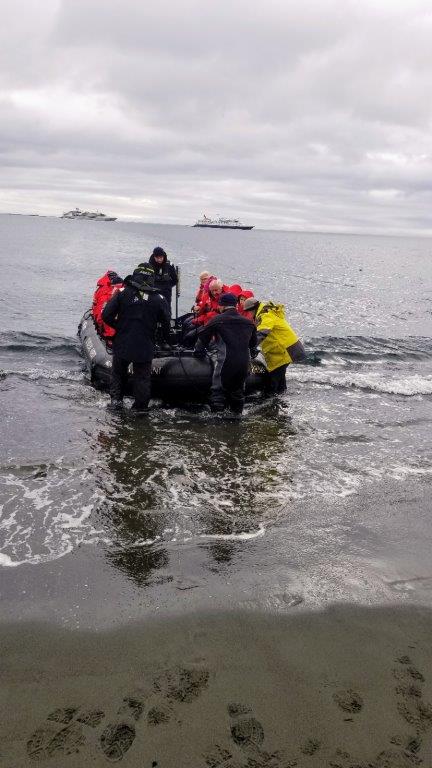
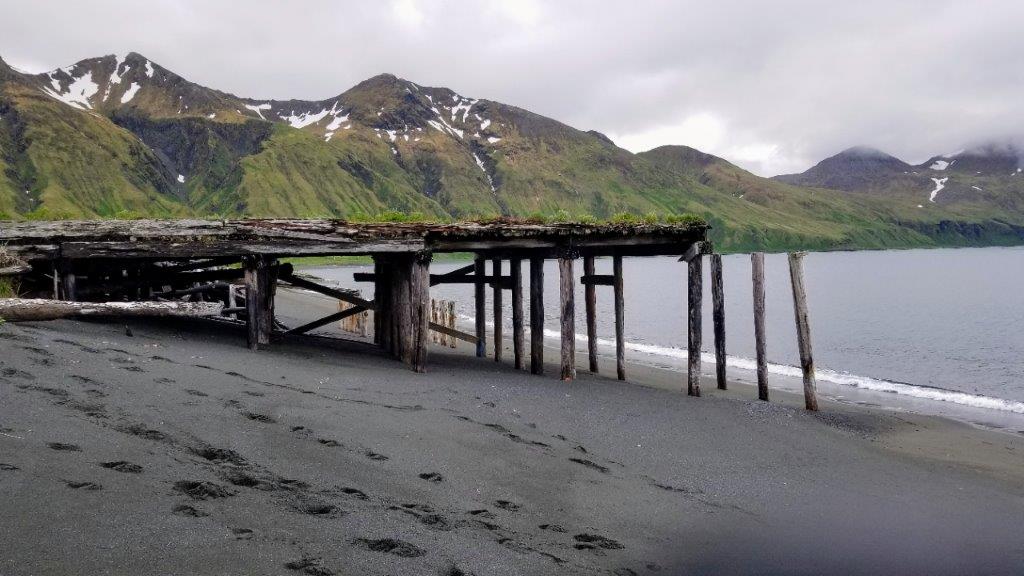
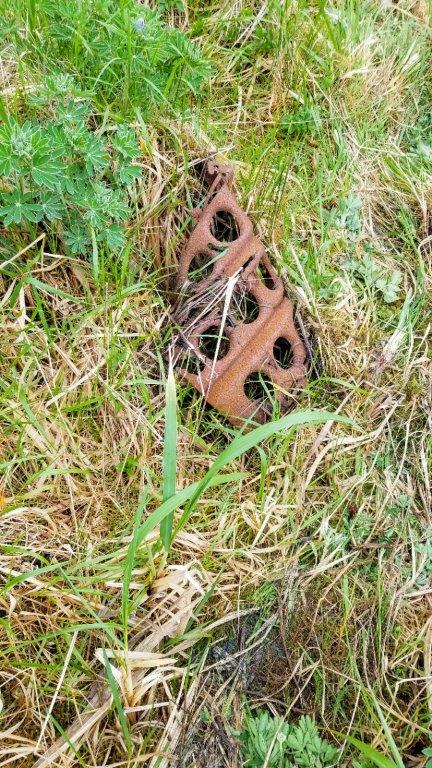
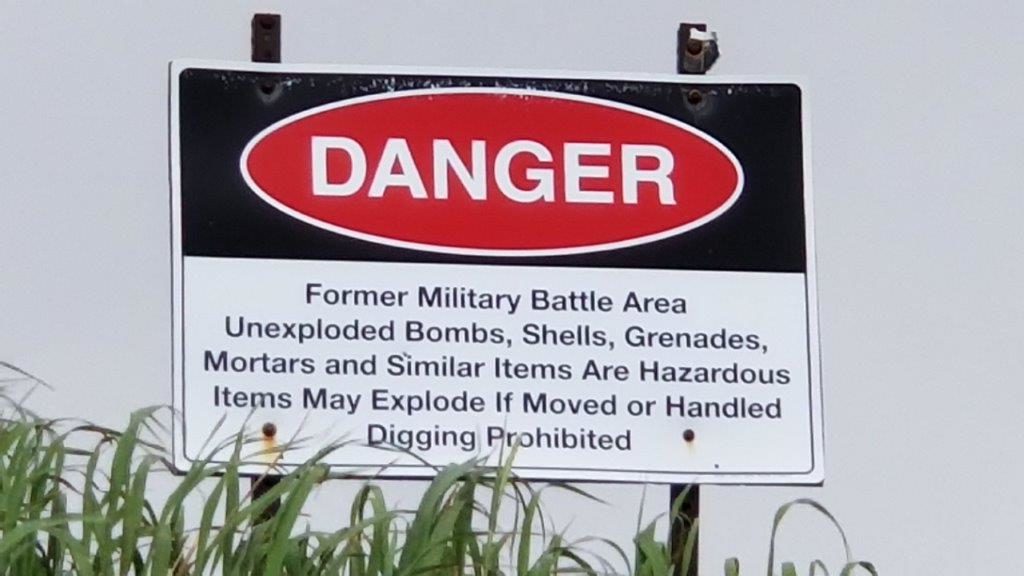
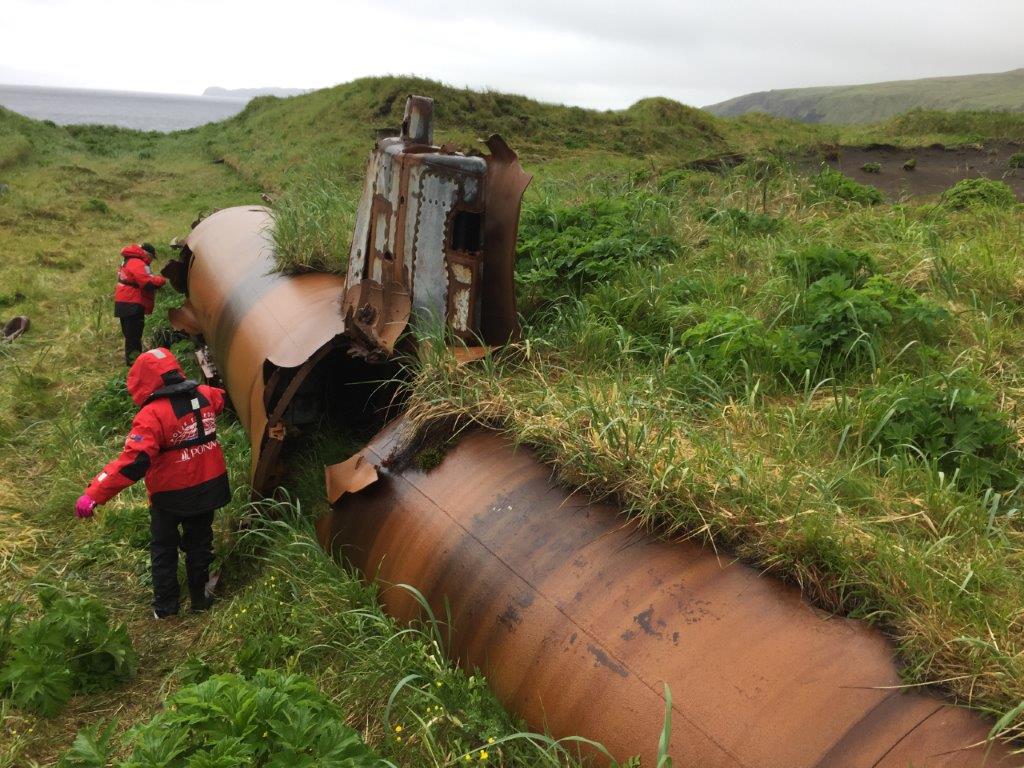
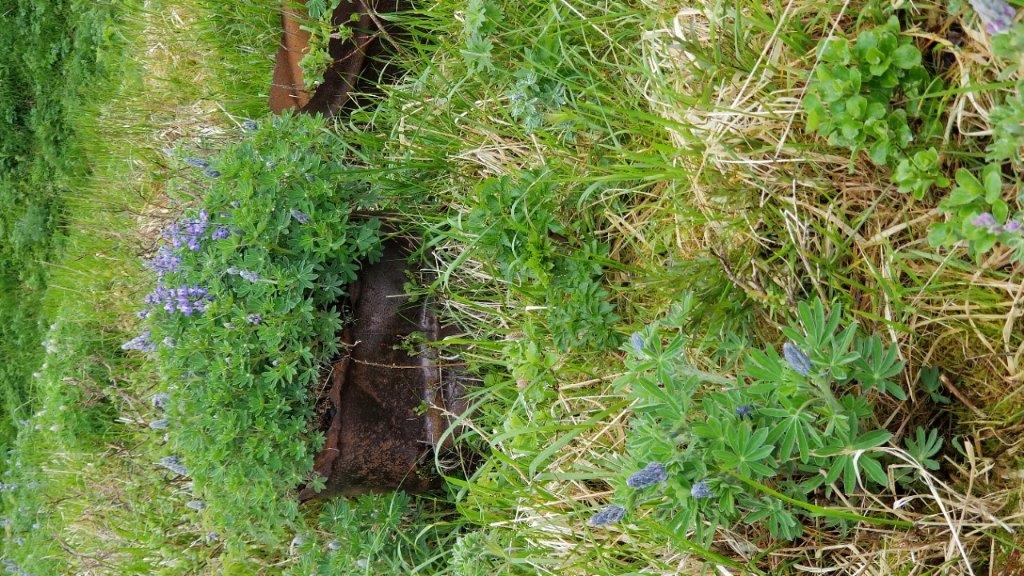
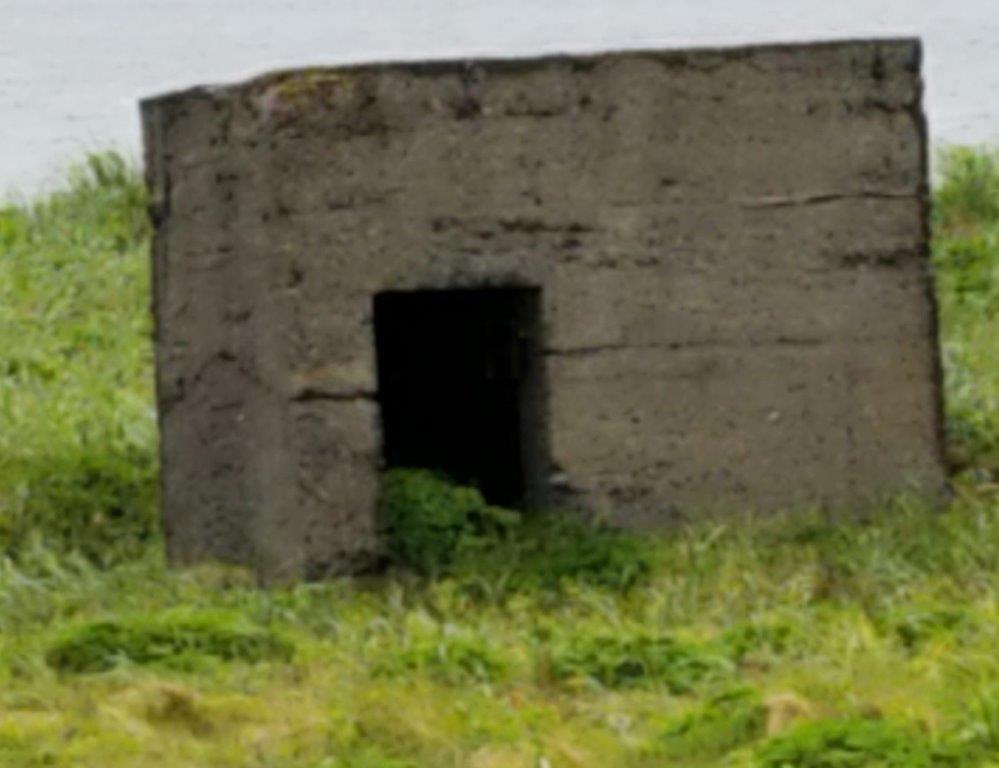
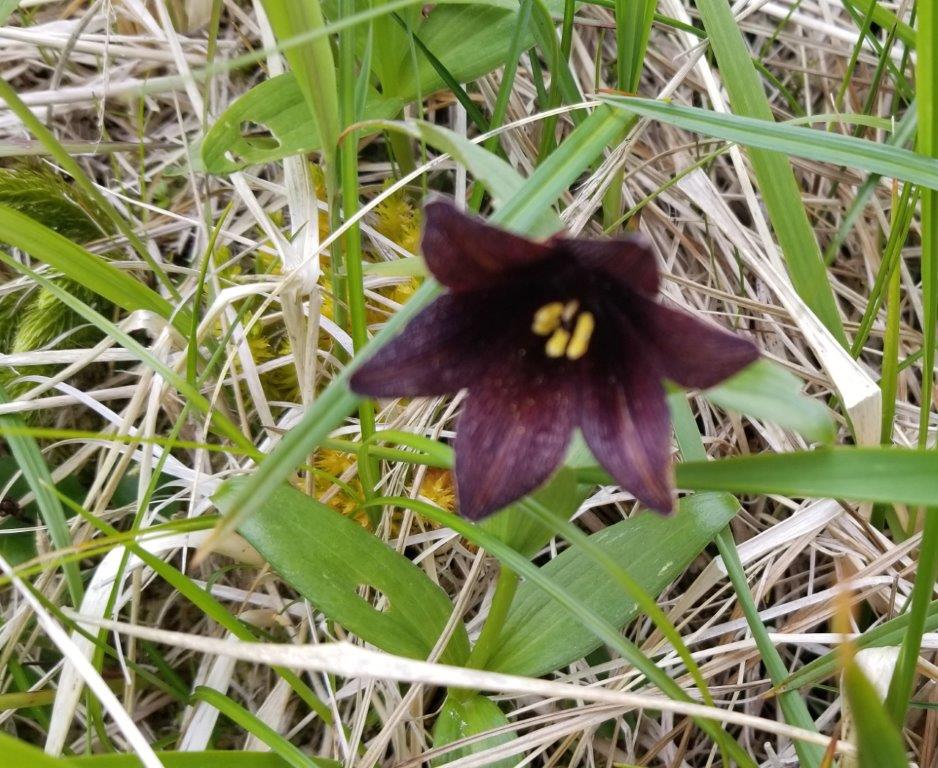
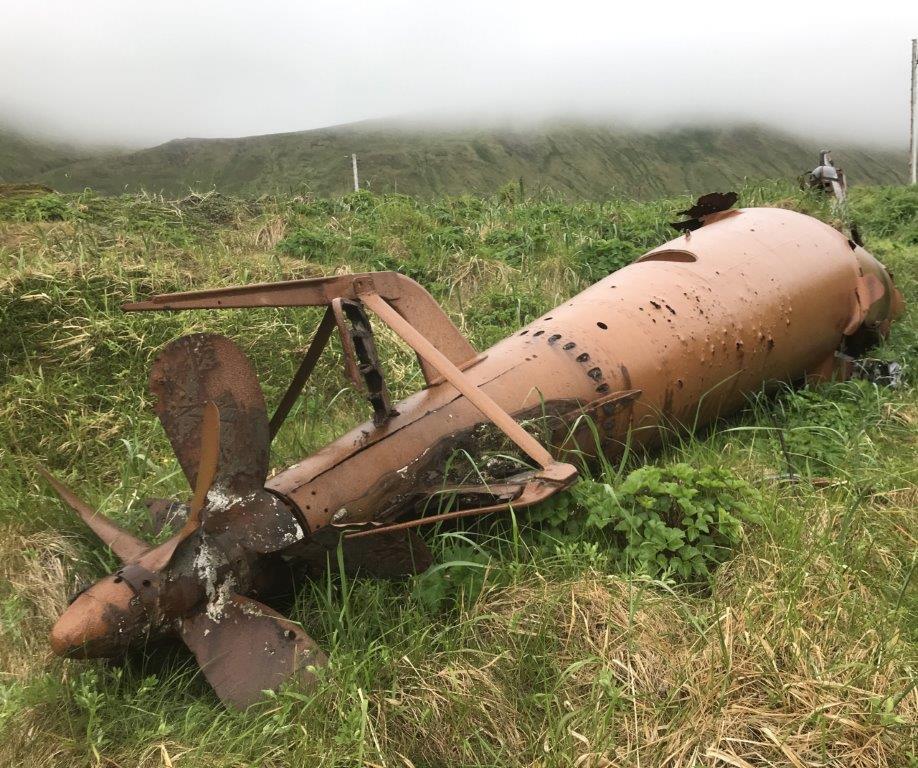
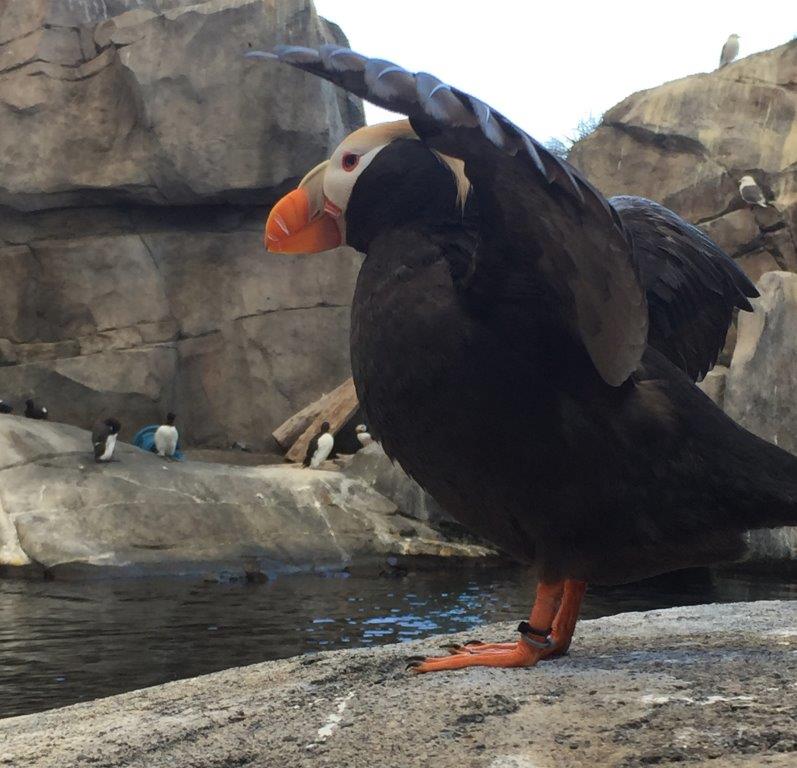
Hi Mary:
How are you doing? Are you living in Arizona now? The pandemic is really horrible for Americans but much less serious in Vancouver.
Really enjoyed this Mary. Sounds like you experienced very favorable weather. Was never aware of this battle or that the Japanese had that kind of force that close to the USA.